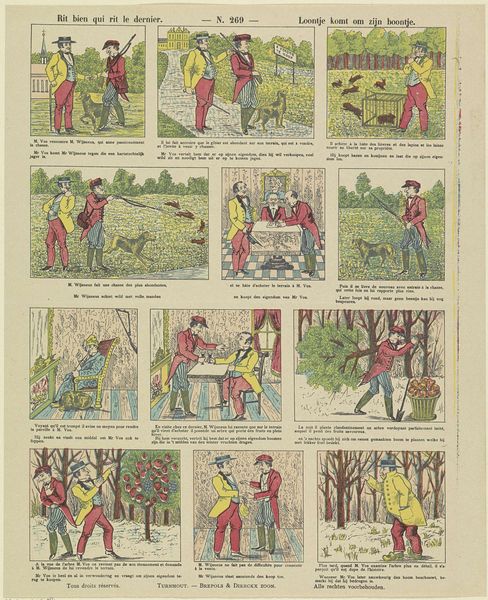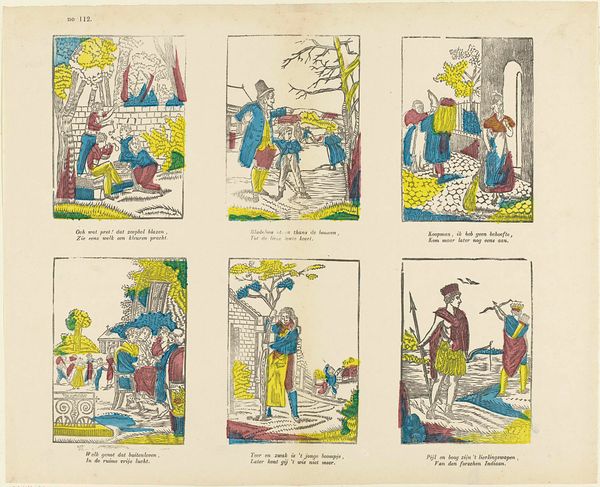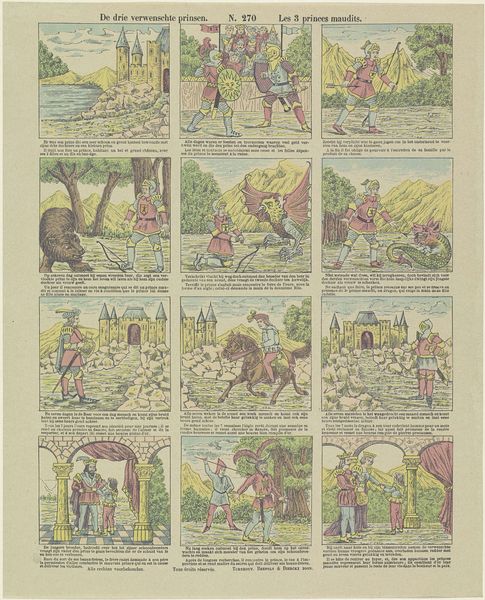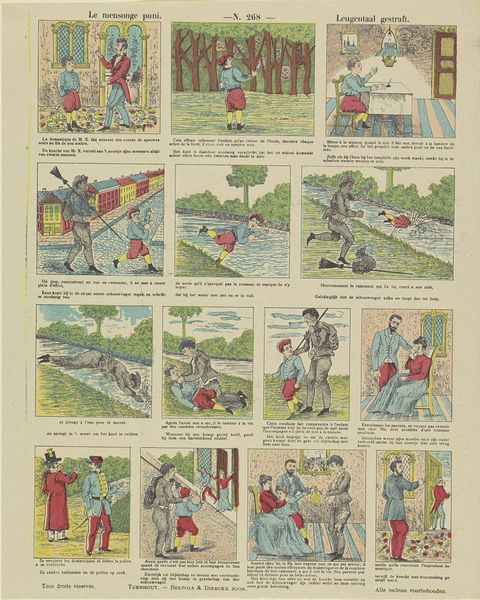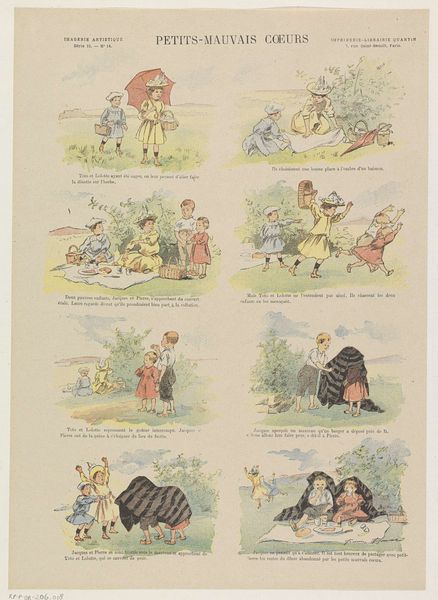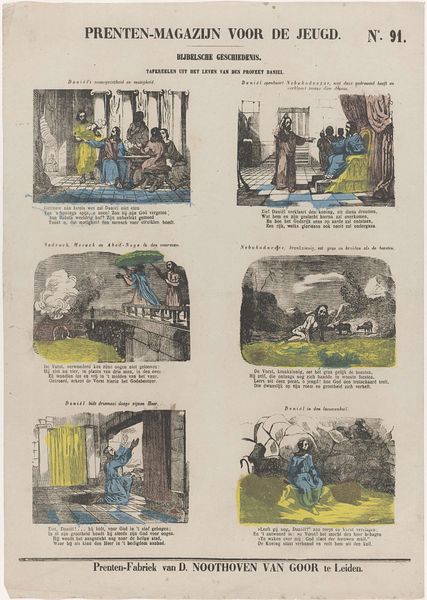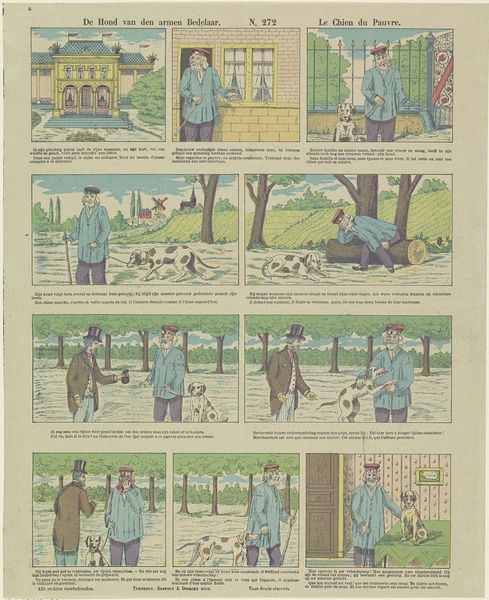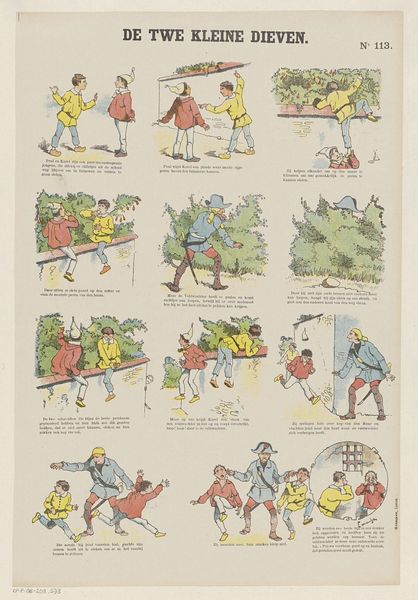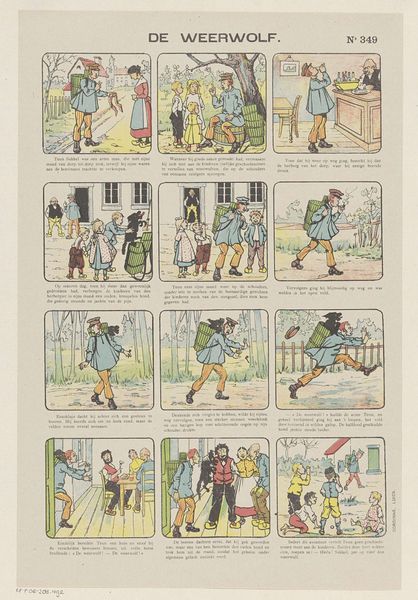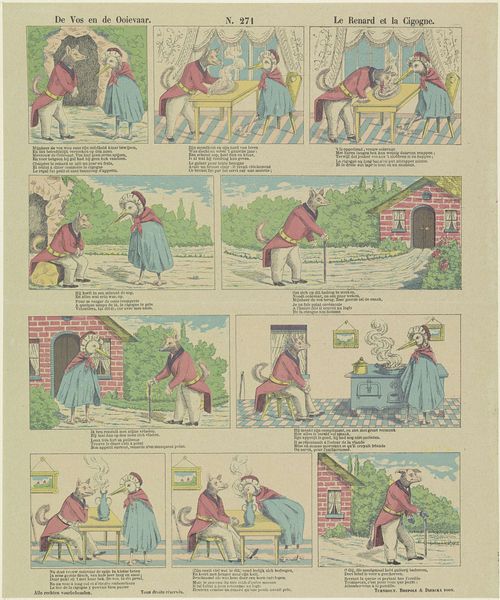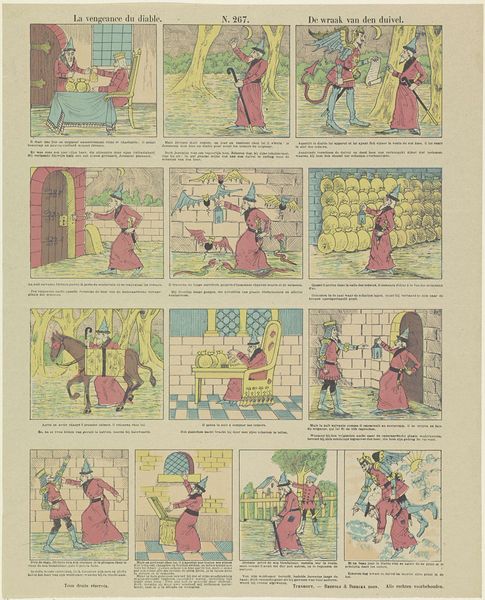
drawing, print
#
landscape illustration sketch
#
drawing
#
aged paper
#
narrative-art
# print
#
landscape
#
personal sketchbook
#
botanical drawing
#
sketchbook drawing
#
watercolour illustration
#
storyboard and sketchbook work
#
sketchbook art
#
story boarding
#
botanical art
Dimensions: height 380 mm, width 313 mm
Copyright: Rijks Museum: Open Domain
Editor: This artwork, titled "De eikel en de pompoen / Le gland et la citrouille," is an older print dating sometime between 1833 and 1911 by Brepols & Dierckx zoon. It uses a sequence of images like a storyboard, and its style reminds me of early comic strips. The faded colors give it a charmingly antiquated look. What structural elements draw your eye when you examine this work? Curator: The sequential narrative is indeed intriguing, particularly how each frame meticulously balances figure and ground. Notice the consistent repetition of the main character across the frames. His posture and attire create a rhythmic visual echo. It compels us to read left to right, top to bottom. Also consider the curious contrast in palette, using these faded blues and oranges. What is the relationship between the subject and its arrangement? Editor: Well, I initially saw it as simply a series of scenes, but you're right, the consistency forces me to consider it as a unit. And I hadn't really paid much attention to how these pale greens, reds, and browns appear through all ten boxes. How does this piece fit into narrative-art overall? Curator: This work prefigures elements we find later in graphic novels. It directs our eyes using compositional cues, a structured grid layout and a commitment to balance. I suggest exploring works from the same period that also employ this technique, you might find visual and intellectual inspiration for new art projects. How did this help refine your perspective on this print? Editor: Seeing the repeated structure has been helpful, and the relationship between the panels is very clear. Focusing on these inherent elements offers a greater appreciation for it. Thank you. Curator: A deep dive into the structure is the surest way of understanding.
Comments
No comments
Be the first to comment and join the conversation on the ultimate creative platform.
